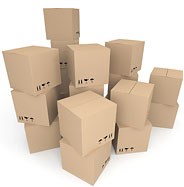Engineers always seem to be constantly tweaking things to take costs out of the supply chain. So much of those efforts are spent on low-hanging fruit.
But exciting developments left simmering on back burners are starting to come to a rolling boil – all aimed at that ubiquitous “last mile” – the most expensive mile in all of shipping.
Thanks to miniaturization, artificial intelligence, robotics and GPS, entrepreneurs and startups are developing entire fleets of vehicles that will deliver products cheaper, faster, and carbon footprint-free. They’re poised to not only save billions in costs incurred by growing numbers of retailers competitively pressured to offer free and fast shipping but revolutionize the way products are packaged.
Most important, it may provide myriad new opportunities for corrugated packaging – the industry that provides most of the world’s last mile containers – to provide solutions in tandem with these revolutionary new vehicles.
“I think it’s a good time to be in the cardboard industry,” logistics expert Anne Goodchild told CBS Sunday Morning in a live program that aired December 15. “And I do hope that we can move to more reusable materials. The industry is still working this out.”
Goodchild was referring to the mountains of cardboard boxes that go missing every year near consumers’ front doors thanks to so-called “porch pirates,” while pointing to the ability of drones and robots to deliver packages to waiting customers on-demand, literally within minutes or hours of placing orders.
Goodchild estimated large-scale drone and robot delivery could literally save more than 50% of conventional shipping costs in that final mile.
Flirtey, a GPS-guided drone company, is poised to handle up to 75% of all deliveries in the United States, founder and CEO Matthew Sweeny told CBS. He also predicted “many” retail orders will be drone-delivered by Christmas 2020.
Kiwibots, boxy compact-sized four-wheeled robots that are currently being piloted in Berkeley, CA, bring things like restaurant orders to college students on sidewalks while dramatically cutting down traffic congestion.
In New York City, modified truck-like bicycles are being piloted by United Parcel Service as a supplemental means of getting packages to customers faster and expensively, according to a Fast Company report. The electric “pedal-assist” bikes are being tried in other cities as well, according to CBS.
Obviously, refrigerators, furniture and washing machines may never be drone-delivered, but the list of drone- – and robot-ready items is nearly endless.
Flirtey is now delivering products to organizations such as NASA, Johns Hopkins University of Medicine, Remote Area Medical, New Zealand Land Search & Rescue, Domino’s and 7-Eleven. Even medical items are currently making their way via drone to consumers all over the country.
For example, large drugstore chain CVS recently reportedly became the first company to deliver a medical prescription to a North Carolina retirement community resident’s home under a program approved by the Federal Aviation Administration.
CVS officials remarked drone delivery may be a viable option particularly in rural areas, “where life-saving medications are needed and consumers at times cannot conveniently access one of our stores.”
Ongoing research
On the flip side, such trends have not gone unnoticed by government researchers. The Department of Energy’s Pacific Northwest National Laboratory in Richland, WA, for instance, is marshaling their knowledge of machine learning and artificial intelligence and apps development to solve urban freight issues.
According to MHI, the nation’s largest material handling, logistics and supply chain association, well over half (and growing) of the world’s population lives in urban areas. With e-commerce and fast delivery growing exponentially, one can only imagine the delivery chaos to come in the years ahead.
Corrbox designers are always thinking outside the box with innovative ideas for customized corrugated solutions. To discuss box configurations for drones and other delivery vehicles in the months and years to come, contact us today or call (949) 248-5880 today with your project or new idea.



